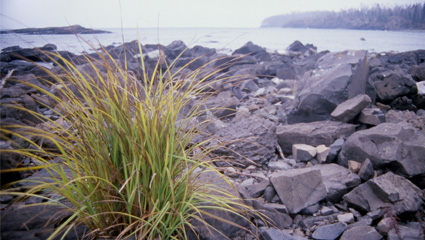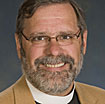In this essay, I want to name a relentless, wonderful truth about preaching and offer a few suggestions for managing that truth; but first an allegory of the sermon journey.
It’s 1975 and my best friend, Mark, and I are crossing the Delaware River on the Ben Franklin Bridge into Philadelphia. I am a newly licensed driver, and Mark is helping me learn how to navigate the “center city.” We head south toward Independence Hall (then still home to the Liberty Bell). We spot the Hall, but Mark has me turn right on Market. Straight ahead is William Penn in bronze standing atop City Hall (then the tallest structure in the city).
Now we’re circling City Hall at the intersection of Market and Broad. After two trips around City Hall, we head up “The Parkway” to the Art Museum (where Rocky ran up the steps, yo!). Once around the circle there, back to City Hall, back down Market Street to Sixth to Chestnut to Independence Hall. Then to Pat’s (or was it Geno’s?) for a cheesesteak, then to a used record store on South Street, then Penn’s Landing, then out Vine Street to the Schuylkill Expressway south to “The Vet” and the Spectrum and back across the Delaware over the Walt Whitman Bridge to South Jersey and home.
By summer I knew my way around, in large part, because on that first day at every turn, every stop light, and every alley, Mark kept me oriented to three landmarks: the Delaware River, Independence Hall, and City Hall. I always knew that they were ahead, behind, or “that way” from us–even when nowhere in sight.
Preaching lives in this relentless, wonderful truth: sermons are events of sound and hearing that unfold over time. Even when the sounds of preaching are artfully accompanied by fixed things to see (videos, props, pictures, or even the face and gestures of the preacher), we deal with the relentless, linear movement of time: each next moment of the sermon arrives even while each present moment is already beginning to fade into a collage of ideas and words and images that is already past–either forgotten or remembered.
Whether you preach extemporaneously or from a detailed manuscript; and whether your sermons are akin to essays, Bible studies, poems, testimonies, or stories; you, preacher, are the only one who knows where the sermon will begin, where it might go, and how it might get there. (Well, yes, God also knows–better than you even–but that’s a subject for a different essay). Words are passing our lips–there they go … already fading into the past–and only we know which ones are expendable and which ones are creating images and ideas that will be the markers for the journey through time unfolding before us and our hearers.
Here is the question I’ve been musing about lately: how do we encourage our hearers that what they are hearing right this second is related to what they heard three minutes ago and to what they will hear five minutes from now? Sermon form is part of the answer; but talk about sermon form typically focuses on big bits–moves, narrative arcs, four pages, three points, or one “big idea.” I want to learn a different way to manage the small bits that our hearers depend on to bring sermon form to bear in their souls: the ideas, characters, and images created or evoked by our words (elements even of formless stream-of-consciousness sermons).
At this early stage of my focused attention to the issue, I have a handful of “awarenesses” to share.
1. Hearers will try to orient to the first things you say. Give them at least one verbal landmark by the second line of the sermon. I don’t mean, “tell ’em everything you’re gonna tell ’em,” but give them as much of the sermon’s key
vocabulary (ideas and images) as early as you can.
2. Hearers will be tempted to orient to vivid ideas and images especially, but not only, near the beginning of the sermon. Jokes, brilliant illustrations, and expressive words are great but only if they become (or point directly to) sermon landmarks.
3. Hearers will orient to ideas and images that receive more time. Sidebars and asides are interesting, but keep them brief; and when you’re done, reorient.
4. Once the landmarks are in place, rely on them. Point to them. Help hearers understand how each new bit of sermon material relates to them.
5. Repeat. Repeat words. Repeat phrases. Foreshadow, echo, recall, and sometimes repeat what you just finished saying.
6. Don’t be afraid of direct (even wooden) re-orientation or recap during the sermon–especially at major transition points.
7. Think about language as akin to “keys” in music. When you have choices about adjectives and verbs, try to stay in the same image family. If your verbal landmark is the “vine,” talk about “growing” rather than “building,” about “lifeblood” rather than “current.”
8. Learn to love “editing.” I understand procrastination and the thrill of “working best under pressure.” I also know that the chance to spend quality time with the mostly composed sermon offers the opportunity to spot verbal landmarks and play with words and their arrangement so they more clearly foreshadow, point to, evoke, echo, and thereby become memorable.
Thank you for allowing me to share these musings with you. I hope this summer to write a longer essay or small book about this topic, and I would appreciate your insights. How do you think about sermon composition at the level of the “small bits?” Write to me at hlangknecht@tlsohio.org.

